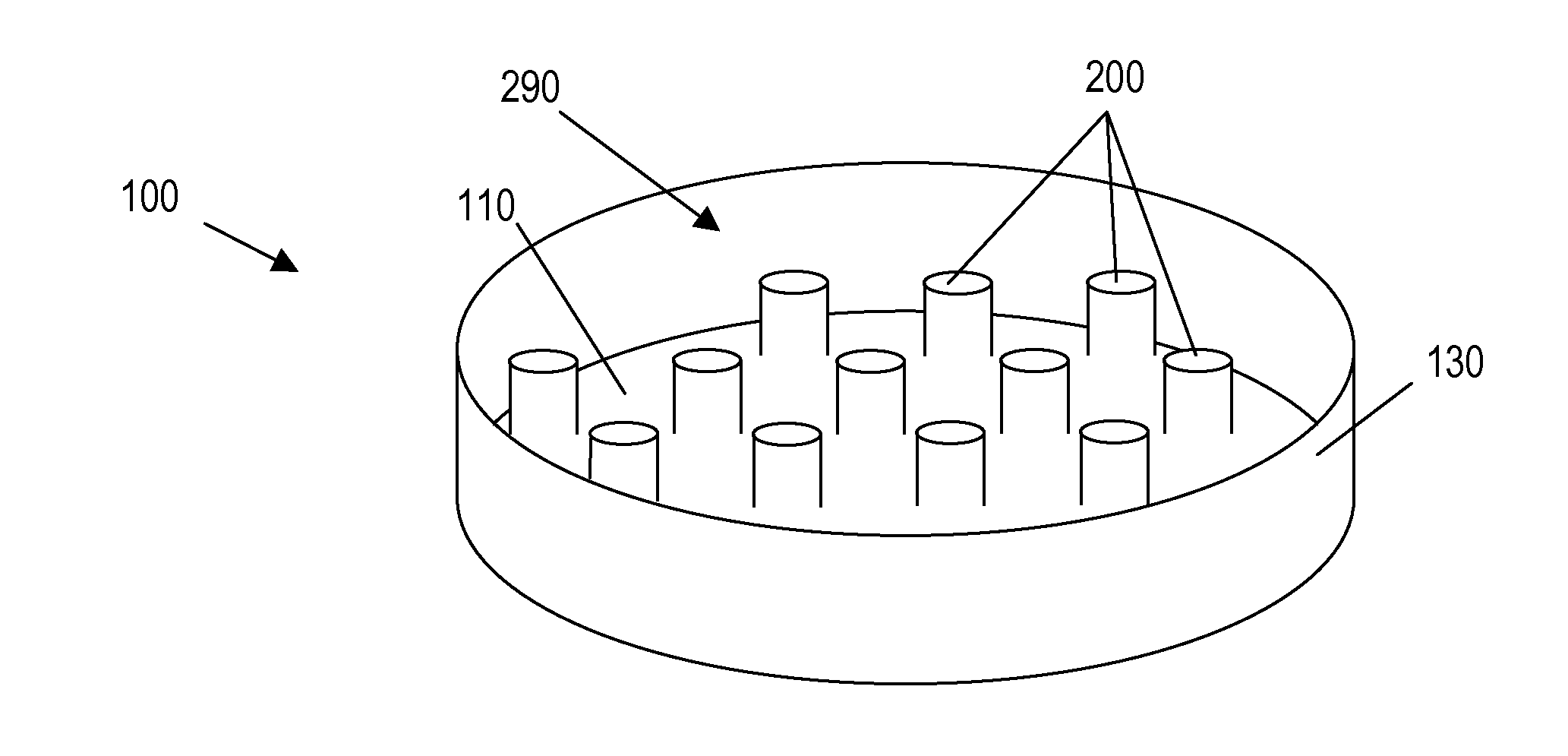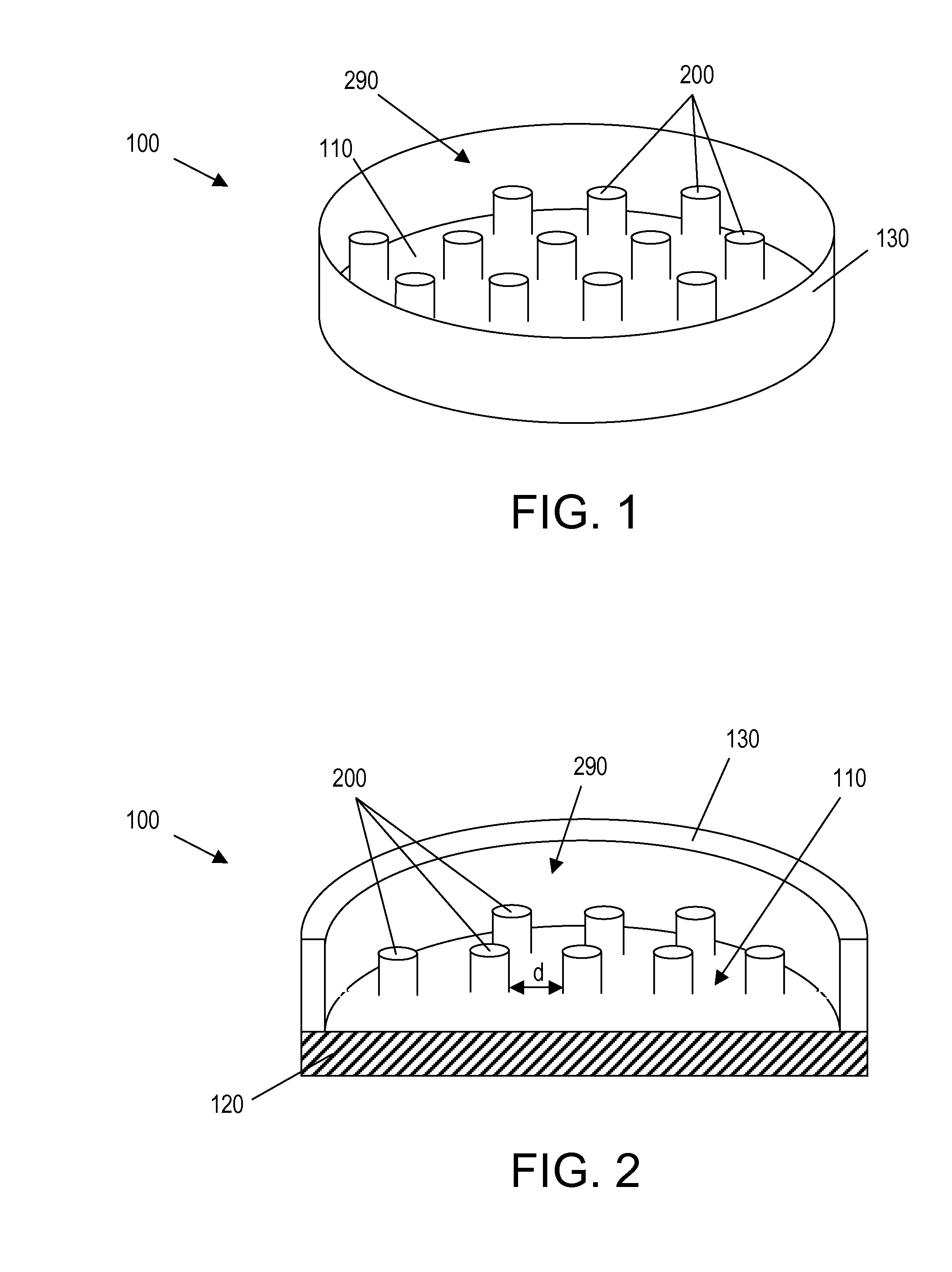Spaced projection substrates and devices for cell culture
a cell culture and substrate technology, applied in the field of cell culture apparatuses with structured protrusions, can solve the problems of reducing the relevance of results, affecting the morphology and function of cultured cells, and affecting the morphology of cultured cells, so as to achieve the polarity of the hepatocyte membrane and the effect of gaining hepatocyte metabolic function
- Summary
- Abstract
- Description
- Claims
- Application Information
AI Technical Summary
Benefits of technology
Problems solved by technology
Method used
Image
Examples
examples
I. Experimental Procedures
A. Materials
[0074]Collagen I and MATRIGEL™ were purchased from BD Biosciences (Spears, Md.). Tissue culture treated polystyrene (TCT) 24 well microplates were purchased from Corning Inc. (Corning, N.Y.). Texas red labeled phalloidin (TR-Phalloidin) and all other chemicals were purchased from Sigma Chemical Co., St. Louis, Mo. Collagen I coated 24 well microplates were obtained from BD Biosciences.
B. Fabrication of Silicon Master
[0075]A master for forming arrays was fabricated from silicon by proximity U.V. photolithography on a Si [100] wafer coated with positive resist (AZ 1529), and pattern transfer by deep reactive ion etching (1.4 μm deep). For submicronic patterns, electron beam lithography on PMMA (polymethylmethacrylate) was used instead of UV photolithography and the etch depth was limited to 100 nm. To enable simple demoulding of this master, an anti-adhesive treatment may be carried out using silanisation in liquid phase with OTS (octadecyltrichlo...
PUM
 Login to View More
Login to View More Abstract
Description
Claims
Application Information
 Login to View More
Login to View More - R&D
- Intellectual Property
- Life Sciences
- Materials
- Tech Scout
- Unparalleled Data Quality
- Higher Quality Content
- 60% Fewer Hallucinations
Browse by: Latest US Patents, China's latest patents, Technical Efficacy Thesaurus, Application Domain, Technology Topic, Popular Technical Reports.
© 2025 PatSnap. All rights reserved.Legal|Privacy policy|Modern Slavery Act Transparency Statement|Sitemap|About US| Contact US: help@patsnap.com



